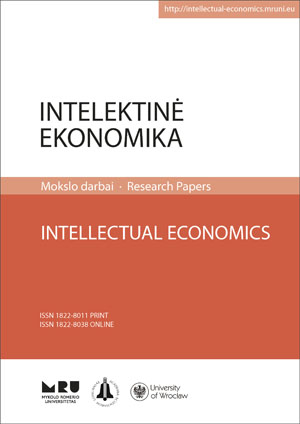THE INVERTED-U RELATIONSHIP BETWEEN R&D AND PROFITABILITY: EVIDENCE FROM THE SLOVAK MEDICAL DEVICE INDUSTRY
THE INVERTED-U RELATIONSHIP BETWEEN R&D AND PROFITABILITY: EVIDENCE FROM THE SLOVAK MEDICAL DEVICE INDUSTRY
Author(s): Serhii Lehenchuk, Tetiana Ostapchuk, Alina Raboshuk, Iryna Vyhivska, Viktoriia MakarovychSubject(s): Economy, Business Economy / Management, Health and medicine and law
Published by: Mykolas Romeris University
Keywords: innovative management; inverted-U relationship; research and development; profitability; medical device companies;
Summary/Abstract: In the knowledge economy, the activities of knowledge-intensive enterprises largely depend on the effectiveness of intellectual capital management and the processes of its creation – research and development (R&D). The present paper analyzes the relationship between the R&D and profitability of the Slovak medical device companies, which belong to high-value-added, knowledge-intensive industries. A sample of 26 companies operating in the Slovak medical device industry for the period of 2015 to 2019 is considered. For data analysis purposes, GRETL software is used. The current study deploys the panel data regression analysis methodology. A regression model is constructed that includes one dependent variable and four independent variables. Using the Breusch-Pagan test and the Hausman test, the feasibility of using the Fixed Effects Method as an estimated parameter for the regression model is substantiated. Diagnosis of the adequacy of this model is performed on the basis of the Normality test, Autocorrelation test, and Heteroscedasticity test, and the feasibility of model estimation is substantiated with robust standard errors. The modeling results show that there is a curvilinear (inverted-U) relationship between R&D and the profitability of Slovak medical device companies, which confirms the hypothesis of the study. RDI has a significant negative impact on ROA at a 1% level, and RDI2 has a significant positive impact on ROA at a 1% level. The current results suggest that more investment in R&D is better for profitability, but only within the zone of optimal R&D activities. Medical device companies that carry out minor R&D activities are encouraged to improve their R&D investment policy to improve their quality and effectiveness.
Journal: Intelektinė ekonomika
- Issue Year: 16/2022
- Issue No: 2
- Page Range: 121-137
- Page Count: 17
- Language: English

